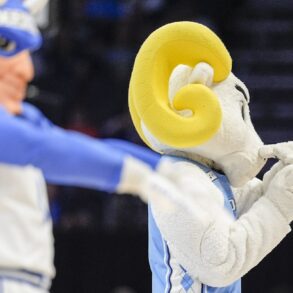
Pendulum swings occur in most areas of life, and the pathway from college basketball to the NBA draft is no exception.
For a long time, college basketball teams struggled to build a team of contenders with players electing to go to the NBA as soon as possible out of college.
With the infusion of NIL in the college sports landscape, that trend has flipped entirely, compounded by star college basketball players hitting the transfer portal.
The NCAA deadline for players to declare for the draft or return to school passed on Wednesday at 11:59 p.m., and that notion became quite clear.
College basketball insider Jeff Borzello and NBA draft insiders Jonathan Givony and Jeremy Woo collaborated on a story on ESPN.com that dove into the new landscape of college basketball.
As Givony points out, the 106 early-entrant candidates were the lowest number in a decade.
Another dozen draftable players withdrew at the deadline, compounding the issue and leaving a bare-bones second round.
From the NBA’s perspective, that’s concerning for them as they build summer league and G League rosters. However, the complete explosion of the NIL market is believed to eventually settle by those in the league.
It will lead to a group of older prospects who elected to return and exhaust their eligibility. The flip side of that for the league is more pro-ready rookies.
It will necessitate a shift in scouting philosophy, as previously, it was easy to dismiss older prospects due to their dominance over 18- and 19-year-olds.
Players were previously criticized for staying in school, but as the entire crop of prospects continues to do so, so grows the level of competition in college basketball.
As Borzello adds, the previous allure of being selected in the second round was enough to entice prospects and has dissipated with multimillion-dollar NIL deals.
It’s not just lower-round players. Multiple first-round projections are returning to their programs for deals up to $3 million. That nearly matches up to the end of the first round on the rookie scale.
“A prospect’s decision no longer hinges on hoping his draft stock is good enough to make real money in the NBA vs. playing for free while developing at the collegiate level,” Borzello writes.
With the perspective on players staying in college for three to four years changing, there’s less risk of perception for prospects to stay and possibly improve their draft stock.
That’s not only due to NIL but also the transfer portal, as they point to several first-rounders who weren’t once that, including Danny Wolf, who transferred to Yale from Michigan.
While the initial effects of NIL on the draft depth will sting for NBA teams, in a few seasons, they may come to appreciate the more pro-ready prospects they receive that have proved their dominance against valid competition.
This post was originally published on this site be sure to check out more of their content.








